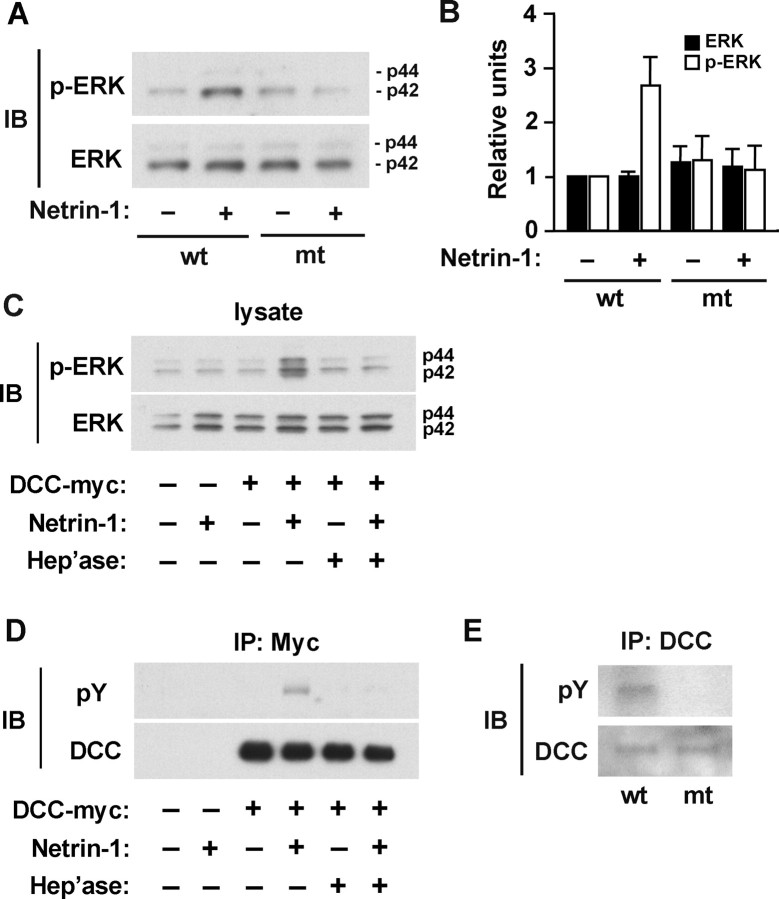Figure 8.
Effects of cell-autonomous loss of HS on netrin-1 downstream signaling. A–C, Analysis of netrin-1-dependent activation of the MAPK pathway. A, Commissural neurons dissociated from E11.5 Wnt1–Cre;Ext1flox/flox (mt) and control littermate (wt) embryos were stimulated without (−) or with (+) 500 ng/ml recombinant netrin-1 for 15 min, and cell lysates were immunoblotted with anti-ERK1/2 (ERK) and anti-phospho-ERK1/2 (p-ERK) antibodies. B, Quantification of the results in A. Levels of total ERK1/2 and phosphorylated-ERK1/2 normalized with respect to wild-type, untreated cells were shown (mean ± SD; n = 4). C, Effect of HS removal on netrin-1-dependent activation of the MAPK pathway in HEK293T cells. HEK293T cells transfected with myc-tagged DCC (DCC-myc) were treated with heparitinase and netrin-1 in combinations shown in the figure. Cell lysates were immunoblotted with anti-phospho-ERK and anti-ERK (total) antibodies. D, Effect of HS removal on netrin-1-induced DCC phosphorylation in HEK293T cells. HEK293T cells transfected with myc-tagged DCC (DCC-myc) were treated with heparitinase and netrin-1 in combinations shown in the figure. DCC immunoprecipitated with anti-myc antibody was immunoblotted with anti-phosphotyrosine (pY) and anti-DCC antibodies (DCC). E, Tyrosine phosphorylation of DCC in vivo. Lysate of E11.5 Wnt1–Cre;Ext1flox/flox (mt) and control (wt) spinal cords were immunoprecipitated with anti-DCC antibody, and the precipitated materials were immunoblotted with anti-DCC (DCC) and anti-phosphotyrosine (pY) antibodies.

